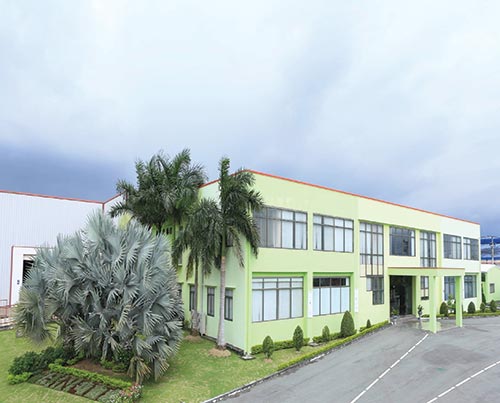A renovation roadmap for Vietnam’s buildings
 |
| Mainetti factory in Dong Nai province's Long Thanh, the first premise in Vietnam being awarded with LOTUS BIO certificate, uses roofing and walling material made by BlueScope |
Construction in Vietnam has boomed over the last two decades thanks to FDI and local manufacturing, but for many reasons the performance of properties has been relatively poor.
This might be attributable to the limited design capabilities of professionals during this period. It is also because advanced technology was not available at the time. Now that the time has come for older properties to be renovated, the question is which strategy is most appropriate.
Renovation consistence towards sustainability
Every property has an annual renovation budget but buiding managers often find it difficult to choose from among the vast number of renovation items which vary in price. Moreover, they often fail to define an effective strategy for renovation. Fortunately, green buildings offer a comprehensive solution in these situations, Quang explained.
A green building framework provides building managers with a comprehensive list of requirements that a property should meet. There are also smaller stepping stones within the different check items that properties can pursue.
In order to earn enough points to qualify for certification, a building does not have to meet all the requirements, just the prerequisites and earn minimum points.
The advantage is that you can gradually renovate a property according to budgetary constraints and operational needs.
Energy savings and more than that
Energy consumption is one of the primary considerations nowadays. Saving energy means also saving on costs. Energy accounts for a significant portion of the total cost of a building or factory, and especially so in heavy industry buildings. Efficient energy use can provide an enterprise with a competitive advantage over its competitors and reduce risks associated with rising energy costs.
Aligning a green building programme with the national energy audit is also a sound strategy. According to the Law on Energy Conservation and Efficiency, promulgated in 2011, 1,200 enterprises will face an energy audit each year in Vietnam. Any enterprise that consumes more than 3 million kWh per year, or with a power capacity of more than 50kW must abide by the specific legal stipulations. Energy audits are already having a major effect on green building programmes. Green building for existing properties is more than just energy savings. It includes most other operational activities including water conservation, waste management, sustainable purchasing, green cleaning, occupant comfort, and many more. So pursuing a green building programme, either LEED or LOTUS, provides property managers and owners with a roadmap and framework to manage operations and renovations.
Customers and technology drive existing properties going green
Customers nowadays are more aware of sustainability. They select goods not only based on price, quality and service, they also care about how those goods are manufactured and what raw materials were used to make them. In a recent survey by AC Nielsen, approximately 60 per cent of Vietnamese customers prioritised goods made by sustainable enterprises. Purchasers all over the world are pushing manufacturers to go green to satisfy their clients’ demands. There is a rising demand for existing factories and buildings to ‘go green’. It is not only green products but also manufacturing facilities that need to be made green.
New technologies and products are advancing the numbers of green building applications. LED lights were available 10 years ago, but have only become popular in recent years thanks to quality improvements and lowered prices due to mass production. Highly efficient air-conditioners such as inverters and VRVs have also become popular now. Painting technology like Clean Colorbond Thermatech for roofing material has been available for several years now. All these advanced technology and products make green building possible.
Green building for Existing Buildings or Buildings In Operation is a perfect choice nowadays.
What the stars mean:
★ Poor ★ ★ Promising ★★★ Good ★★★★ Very good ★★★★★ Exceptional
Latest News
More News
- Going green to save a bundle (June 08, 2015 | 10:00)
- Green buildings: the rising trend (June 02, 2015 | 09:41)
- Green buildings – key to sustainable urban development in Vietnam (May 18, 2015 | 17:00)
- Feed-in tariffs continue to haunt green energy prospects (December 15, 2014 | 10:47)
- Building material types intrinsic to green ratings (December 09, 2014 | 11:56)
- Turning an eco- smart dream into reality (December 09, 2014 | 11:55)
- Green products enjoy a growing presence at Vietbuild Hanoi 2014 (December 01, 2014 | 10:06)
- Country profits from green building (November 24, 2014 | 11:02)
- Firms flout enviroment laws (November 17, 2014 | 10:48)
- Energy efficient sticks and carrots (November 10, 2014 | 15:30)


















 Mobile Version
Mobile Version